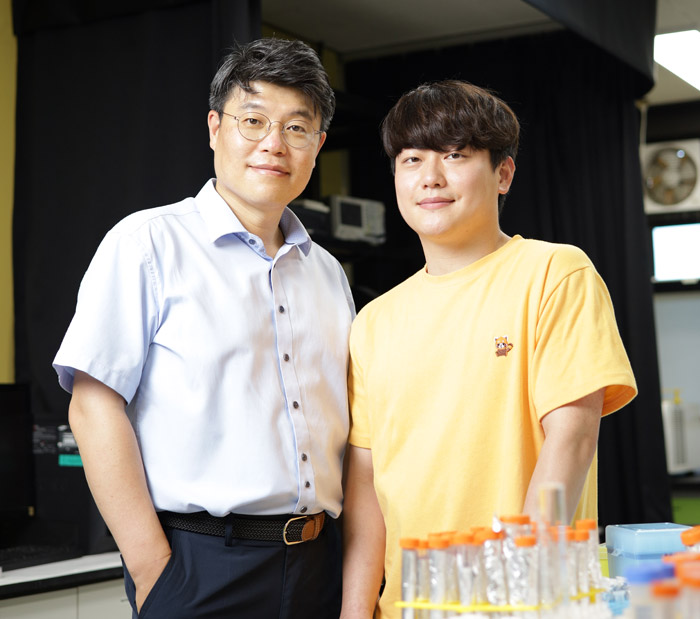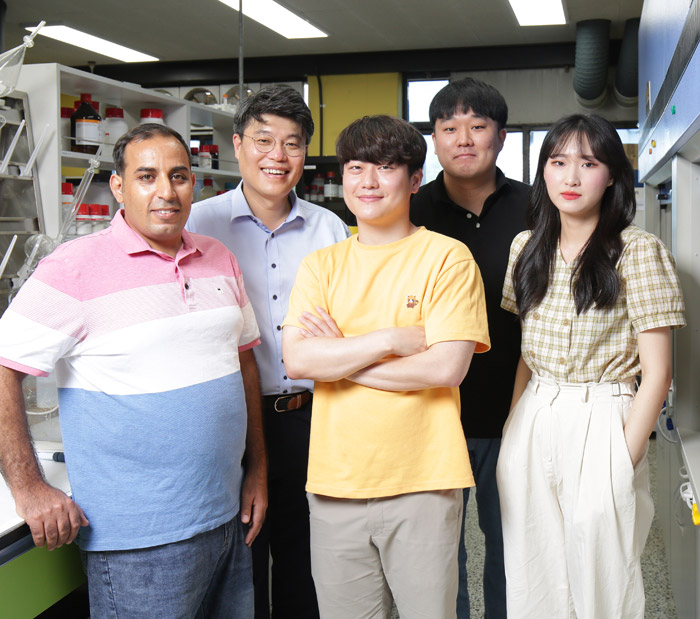Research Stories
Atomic-scale disorder enabled ever-smaller and ever-more-efficient microlasers
Liquid-quenching breaks down the lattice structure of crystalline materials to minimize the energy loss during laser process
Chemical Engineering
Prof.
KIM, DONG HWAN
Dr. Byeong-Seok Moon
□ The research team of Prof. Dong-Hwan Kim (1st author: Dr. Byeong-Seok Moon) develop an ever-smaller and ever-more-efficient microlaser using a new upconversion material that has atomic-scale microstructural disorder through the collaboration with Prof. Young-Jin Kim (KAIST) and Prof. Sang Kyu Kwak (UNIST).
□ Microlasers are the optical device that can generate laser emission while it is smaller than a few tenths of the thickness of a human hair. Microlasers have attracted a great attention because it can be used as a light source for photonic integrated circuits, for example, an optical communication chip (Intel® Silicon Photonics) for massive data transport.
□ To bring the microlasers in our daily life, the researchers around the world have dedicated their efforts to further miniaturize the microlasers and improve their efficiency. However, as we miniaturize the microlasers, they lose their ability to confine and amplify the light. Therefore, the realization of both miniaturization and high laser efficiency has been considered as a challenging task.
□ The research team of Prof. Dong-Hwan Kim has overcome this challenge by minimizing the energy loss of gain medium during laser process.
□ The developed microlaser in this study has the great potential in next-generation biomedical technologies such like ‘sinlge-molecular biodetection’ and ‘real-time biosensing in live-cells’. Furthermore, since it is feasible for a light source of photonic integrated circuits, it will pave the way for highly-valued industrial applications.
□ Prof. Kim said “We for the first time exploited the atomically disordered material for developing microlasers to overcome the conventional limitations of miniaturization and laser efficiency. By automating the fabrication and integrating systems, we are planing to utilize our microlaser as a solution for future technologies.”
□ Continuous-wave upconversion lasing with a sub-10 W cm-2 threshold enabled by atomic disorder in the host matrix. Nature Communications, 12, Article number: 4437 (2021), (1st authors: Dr. Byeong-Seok Moon). Published July 21 2021 (IF: 14.919)
※ Title of paper : Continuous-wave upconversion lasing with a sub-10 W cm-2 threshold enabled by atomic disorder in the host matrix
Fig. 1: Continuous-wave upconversion lasing in liquid-quenched upconversion microspheres (LQUM).
Fig. 2: Ultralow-threshold continuous-wave upconversion lasing.
Fig. 3: Theoretical analysis of the enhancement of the upconversion lasing efficiency in the amorphous phase of NaYF4 combined with SiO2.


